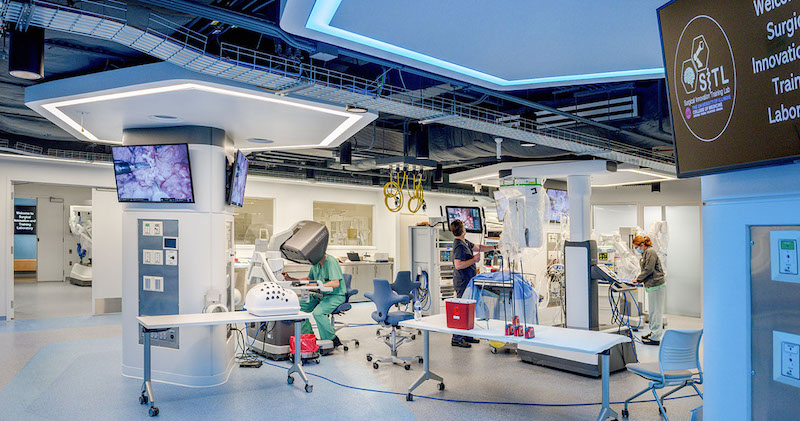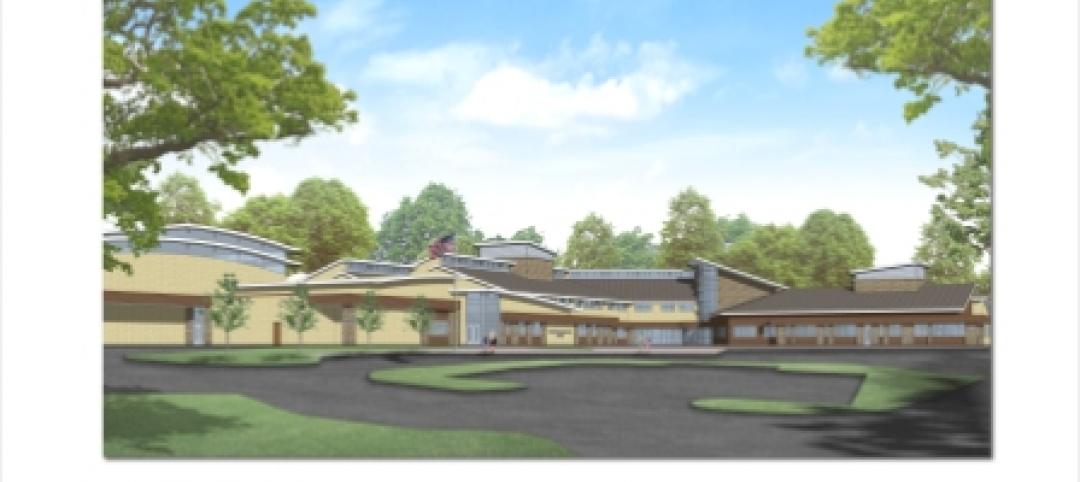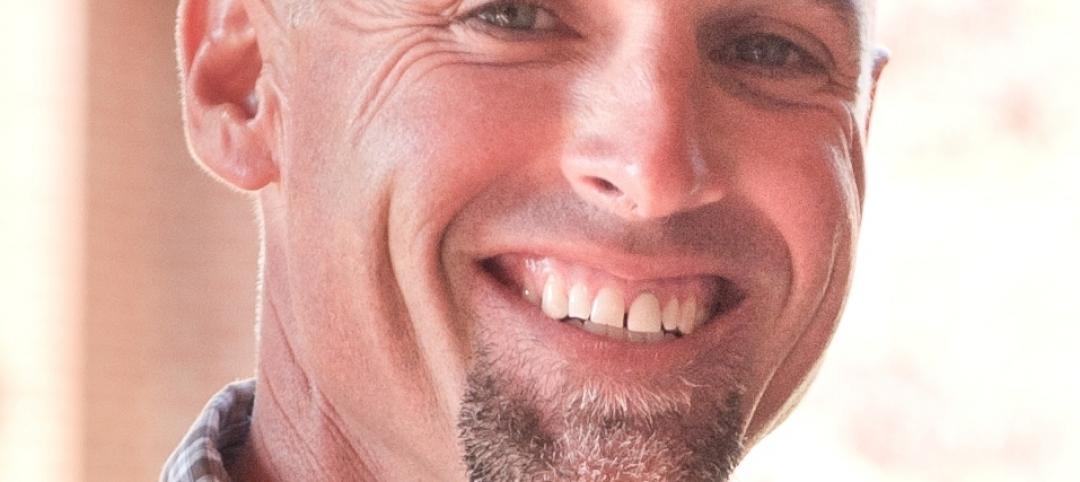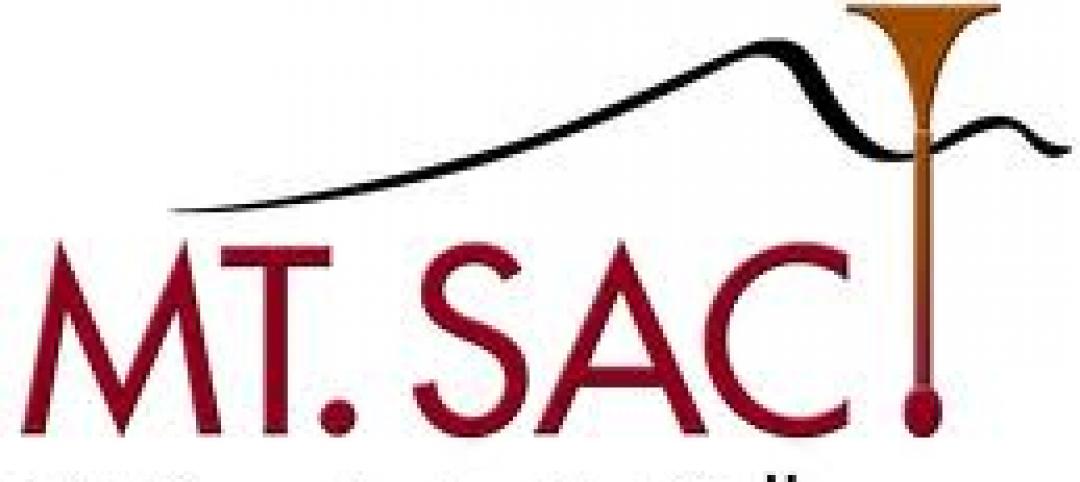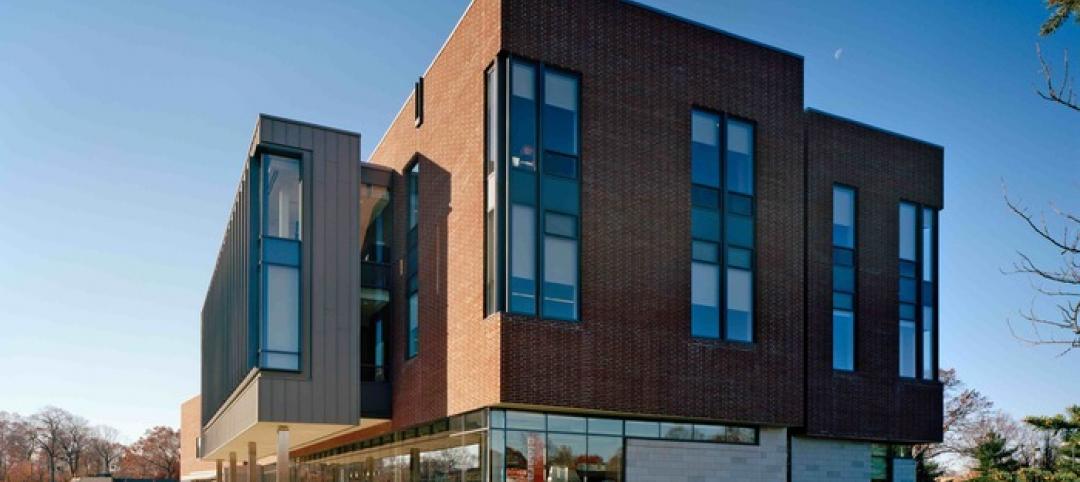We’re heading straight for a significant healthcare worker shortage—and fast. According to the Association of American Medical Colleges, by 2033, the U.S. could experience a shortage of anywhere from 54,000 to 140,000 physicians.
By just 2025, the consulting firm Mercer estimates that we’ll see significant shortages in nursing assistants (95,000), home health aides (446,000), nurse practitioners (29,000) and medical and lab technologists and technicians (nearly 100,000).
This reality means colleges and universities are heavily investing in their health sciences and medical education programs to combat this shortage—with many creating new buildings or renovating their existing facilities. With building projects often taking multiple years to be designed, built and operationalized, it’s critical to fully understand the constantly evolving future of health sciences and medical education, and to design for that future today.
Here are a few ways we’re thinking about that future—and how we believe innovation and collaboration within these spaces will advance.
1. Buildings are only as collaborative as their users.
We know how to design spaces that encourage both planned and serendipitous collaboration. Co-locating different departments in the same areas and designing spaces flexible enough to be used by different departments and specializations are a few strategies we use.
But people won’t co-mingle and collaborate only because we’ve provided the spaces to do so. If the building users don’t see the value or available opportunities, collaboration won’t happen.
It might sound radical, but the best way to achieve better collaboration is by eliminating traditional operational silos and the resulting departments. For example, our firm is currently designing the first “department-less” hospital for the Philadelphia Neuroscience Institute. It was initiated not by the hospital C-suite, but by the team of neurosurgeons who will use the space each day. Without separate departments and offices, various clinicians, physicians, researchers and more will naturally be sharing spaces and continually collaborating on patient care.
 The Philadelphia Neuroscience Institute establishes a new typology for healthcare design that will connect clinicians, patients and industry partners for bold new care delivery and research.
The Philadelphia Neuroscience Institute establishes a new typology for healthcare design that will connect clinicians, patients and industry partners for bold new care delivery and research.
If this is the patient care building of the future, are education programs preparing students with the skills they need to thrive in this new reality?
2. Virtual Learning serves a great function—but can only go so far.
Training future medical practitioners and care staff virtually will not teach them how to empathize with people, which is a core tenant of their field. It’s important to connect with patients on a personal level—to see their body language, feel their emotions, understand their needs and provide compassionate in-person support and care.
Virtual learning is best for delivering educational content and providing self-paced lessons. Technology can close gaps: Instead of students having to take remedial courses and being told they’re not good enough, they can work individually to catch up with their peers. It also allows students to rewatch lectures and presentations to ensure they can review core anatomy, biology or chemistry concepts multiple times.
Using video, lessons can be taught and learned outside the classroom, which allows students to be physically present in school for project work and simulation practice. We designed the Kaiser Permanente Bernard J. Tyson School of Medicine to accommodate this approach, which allowed us to free up more space in the building for team-based, hands-on learning.
 The simulation areas in the Kaiser Permanente Bernard J. Tyson School of Medicine allow students to fully engage in practicing the foundational skills required to care for patients in a variety of real-world settings.
The simulation areas in the Kaiser Permanente Bernard J. Tyson School of Medicine allow students to fully engage in practicing the foundational skills required to care for patients in a variety of real-world settings.
3. The perfect space is an empty space.
It might sound counterintuitive coming from architects, but an empty space—with plenty of nearby storage—can be configured for a variety of disciplines, teaching styles, training and technology needs.
Envisioning uses for an empty space requires a lot of thought and foresight into how the room could and will be used in the future, and how technological advances might affect that. The Surgical and Innovation Training Lab we designed at the University of Illinois at Chicago (UIC) took this idea to the next level. The space can be transformed into an operating suite for extreme environments, such as on a space shuttle or in the middle of the desert with no resources around. To facilitate this kind of radical flexibility and adaptability, the ceiling plane was designed similarly to a theatre stage so that everything in the ceiling can be moved and re-arranged, including lights, equipment, technology and more.
 UIC’s Surgical and Training Lab can easily be reconfigured to test out and simulate procedures for any type of environment.
UIC’s Surgical and Training Lab can easily be reconfigured to test out and simulate procedures for any type of environment.
“Flexibility” is the concept of the future when it comes to higher education spaces—and for good reason. The more flexible a room is, the more ways it can be used, which allows colleges and universities to get more for their limited budgets. An open room that allows for active learning, group work and technology use—like immersive virtual reality—can serve many different types of disciplines, courses and training needs.
4. Let’s think outside the hospital room.
As designers, we spend a lot of time conceptualizing the exam or inpatient room and other clinical spaces for both training and patient care, but healthcare—and even surgery—also happens outside the hospital walls in unregulated environments. It’s interesting to talk with paramedic and medivac teams about how they provide care and then incorporate mobile healthcare into training spaces.
While serious conditions and procedures still need to be managed within clinical environments, many procedures that were once inpatient reliant are now capable of being done in an ambulatory outpatient setting—and many patients, symptoms and conditions can be evaluated, monitored and treated virtually without having to step foot into a healthcare building. Patients can even be monitored remotely through wearable diagnostic devices that can anticipate problems or detect symptoms before a crisis occurs.
 Teledigital pods for one-on-one virtual sessions give clinicians adequate space to perform virtual visits.
Teledigital pods for one-on-one virtual sessions give clinicians adequate space to perform virtual visits.
The doctor of the future needs to be trained to work “outside” the traditional hospital parameters and be able to diagnose, manage and treat conditions both in person and virtually.
5. Stress-reducing design elements can only go so far.
We know a lot about designing to improve mental health and wellness: providing access to daylight and outdoor spaces, utilizing soothing colors and incorporating biophilic design strategies like green walls are a few prime examples. But if someone is going through a very difficult personal experience outside of a healthcare building, these design elements can’t alone take that stress away.
Something we’re continually advocating for within medical education and health science buildings—and across higher education campuses—is dedicated space for mental health wellness. This could include space for meditation or respite or clinics for counseling services.
 The rooftop at Kaiser Permanente’s Bernard J. Tyson School of Medicine is filled with amenity spaces for students to rest, relax and recharge, including areas for meditation, socializing, exercise and outdoor learning.
The rooftop at Kaiser Permanente’s Bernard J. Tyson School of Medicine is filled with amenity spaces for students to rest, relax and recharge, including areas for meditation, socializing, exercise and outdoor learning.
The pressures and stress that come with medical school can have a major impact on students’ mental health and wellness. The spaces we design must function as preventative tools to help diminish the potential for burnout and exhaustion.
6. Academic medical centers are the classroom of the future, again!
We’re designing health sciences and medical education buildings that offer plenty of space for hands-on training that also improves the health of the surrounding community. Malcolm X College in Chicago and the new Health Sciences Hub at D’Youville College both house clinics to provide healthcare services to the community.
But what if we bypassed the classroom and went straight to the care facility? What if all first-year students entered the hospital on day one?
Lectures and learning could take place off-site; simulation centers could be expanded and classrooms could be inserted into hospital buildings to allow for discussion and debriefs. Hospitals are the ultimate classrooms—let’s start there.
 A teaching institution affiliated with the Université de Montréal, the Centre Hospitalier de l’Université de Montréal is the largest new healthcare development in North America. It was designed to seamlessly merge education, research and healthcare.
A teaching institution affiliated with the Université de Montréal, the Centre Hospitalier de l’Université de Montréal is the largest new healthcare development in North America. It was designed to seamlessly merge education, research and healthcare.
With the large investments higher education institutions are making in the medical education and health sciences fields, now is the time to push boundaries and think bigger. Let’s get creative about the teaching, learning and training environments we create—and prepare students to be the best providers possible.
Related Stories
| Jan 31, 2012
Perkins Eastman’s Miller appointed Chairman of the AIA International Committee
International expertise leveraged as global industry resource.
| Jan 31, 2012
KBE selected for school project in Waterbury, Conn.
Located adjacent to the existing elementary school, the $28 million, 82,000 s/f Pre-K to eighth Grade school is expected to host its first students in the fall of 2013.
| Jan 31, 2012
Construction Law Firm Allensworth & Porter, LLP adds May to the firm
Prior to joining Allensworth & Porter, May served as the staff attorney for the Texas Civil Justice League, and was responsible for drafting, analyzing, and tracking civil justice and business-related legislation during the 82nd Legislative Session.
| Jan 31, 2012
Skanska USA Civil promotes Bradley to southeast general superintendent
In Bradley’s new position, he will manage field operations for all Skanska Civil projects in the southeast.
| Jan 30, 2012
Siemens and Air-Ex Team deliver building controls training to Mt. San Antonio College students
Siemens contributes training modules and technology to support hands-on courses.
| Jan 30, 2012
Hollister Construction Services to renovate 30 Montgomery Street in Jersey City, N.J.
Owner Onyx Equities hires firm to oversee comprehensive upgrades of office building.
| Jan 27, 2012
Caterpillar reports record sales and profit for 4Q and full-year 2011
Momentum carries into 2012 with sales and revenues outlook raised to $68 to $72 billion.
| Jan 27, 2012
Smith Seckman Reid opens two new offices
Smith Seckman Reid, Inc. (SSR), an engineering design and facility consulting firm, has opened two new offices, one in Chicago, the other in Washington, D.C.
| Jan 27, 2012
BRB Architects designs new campus center for Molloy College
Intended to be the centerpiece of the College’s transformation from a commuter college to a 24-hour learning community, the “Public Square” will support student life with spaces such as a café, lounges, study rooms, student club space, a bookstore and an art gallery.
| Jan 27, 2012
Columbia University’s New Core Laboratory aims for LEED Silver
Construction manager Sordoni Construction Co. along with the design team of Payette Architects and Vanderweil Engineers will provide design and construction services to renovate the majority of the existing Core Lab building to create the new Lamont Center for Bio-Geochemistry.


